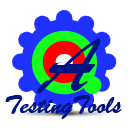You are here
Google Code Projects
.
Google Code Projects
Displaying 1 - 9 of 9Google Code Projects

Introduction
Project Hosting on Google Code provides a free collaborative development environment for open source projects.
Contact Representatives
Specialties
Project Hosting, software development, open-source, code community, testing tools projects,Python,JavaScript,Django,Web,Google,Java,AJAX, Rails,PlugIn,Android,CPlusPlus,MySQL,DotNet,Game,AppEngine, PHP,Flash,jQuery,Database,GWT
Theme by Danetsoft and Danang Probo Sayekti



 Google Code Projects Representative
Google Code Projects Representative